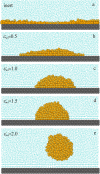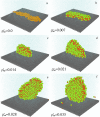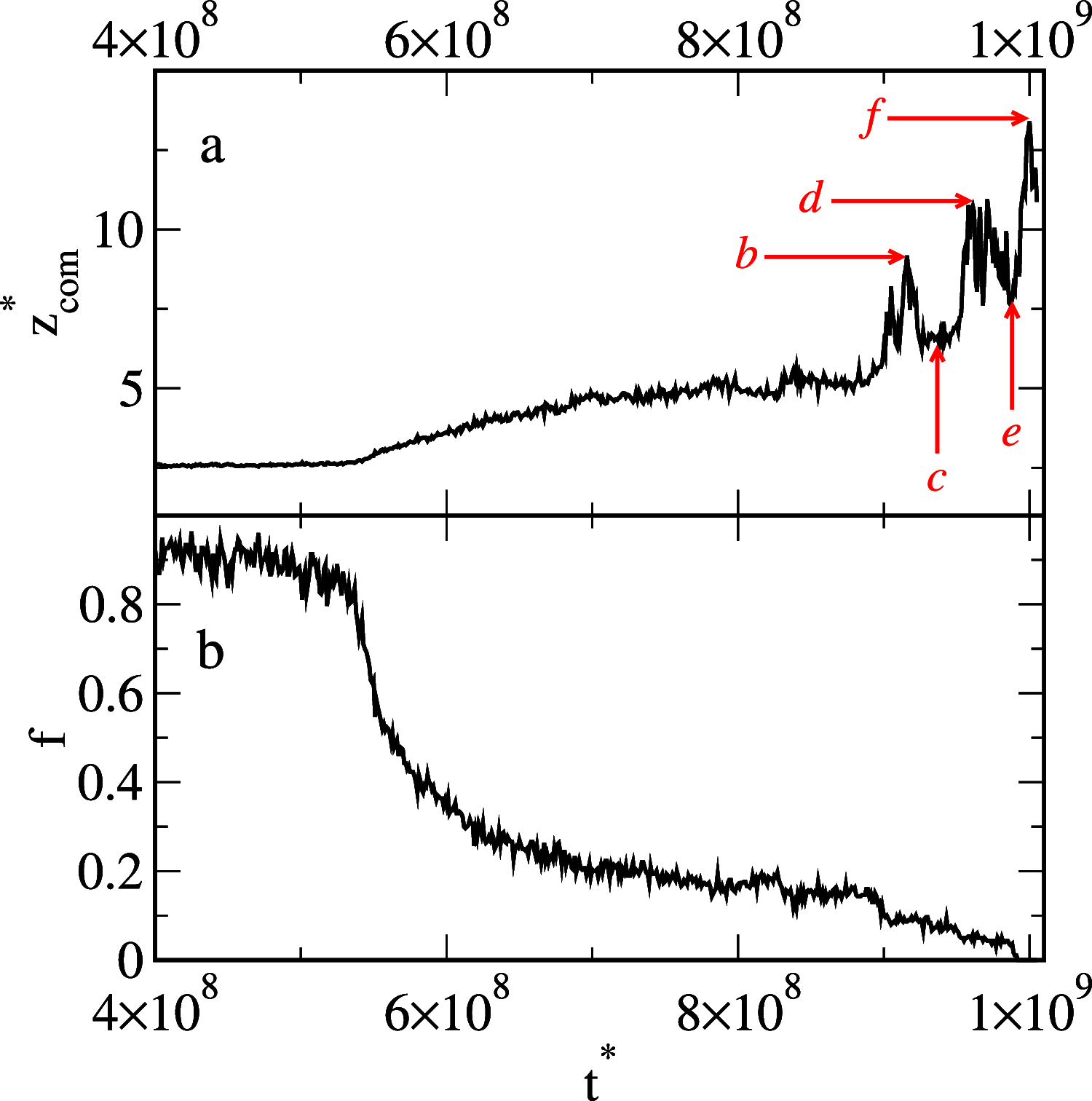Molecular Dynamics Simulations of Oil Detachment from Hydrophobic Surfaces by Using Janus Nanoparticles
- PMID: 40545751
- PMCID: PMC12235647
- DOI: 10.1021/acs.jpcb.5c01850
Molecular Dynamics Simulations of Oil Detachment from Hydrophobic Surfaces by Using Janus Nanoparticles
Abstract
Janus particles composed of two parts with different chemical properties can be used for enhanced oil recovery. We investigated the role of Janus dimers in the process of detachment of oil aggregates from hydrophobic solid surfaces using molecular dynamics. Large-scale simulations were performed for different sets of parameters characterizing the system. The effects of interactions between Janus particles and a solid surface and with an oil droplet were considered. We found two main mechanisms of enhanced oil removal: the "kidnaping" of oil aggregates by Janus nanoparticles from the substrate and the competitive adsorption of nanoparticles at the solid surface. In the case of weak affinity of Janus particles with the substrate, the first mechanism dominated, whereas when the affinity was strong, the second mechanism played an important role. We showed how the amphiphilicity of Janus particles and their concentration influence the shape and internal structure of oil aggregates adsorbed on a hydrophobic surface. The high amphiphilicity of Janus particles and their increased concentration promote the process of removing oil from the surface. We analyzed the time evolution of the system after the addition of Janus particles in detail. In the "kidnaping" process, the flat oil aggregate left the surface as a large, sandwich-like aggregate, while the adsorption of Janus particles on the surface caused it to break up into small pieces that left the surface as nearly spherical droplets.
Figures














References
-
- Tohidi Z., Teimouri A., Jafari A., Gharibshahi R., Omidkhah M. R.. Application of Janus nanoparticles in enhanced oil recovery processes: Current status and future opportunities. J. Pet. Sci. Eng. 2022;208:109602. doi: 10.1016/j.petrol.2021.109602. - DOI
-
- Zhao M., Liu K., Meng X., Ma Z., Dai C.. Review on principles, influence and applications of nanomaterials in enhancing oil recovery. Fuel. 2024;371:131985. doi: 10.1016/j.fuel.2024.131985. - DOI
-
- Duan Y., Zhao X., Sun M., Hao H.. Research Advances in the Synthesis, Application, Assembly, and Calculation of Janus Materials. Ind. Eng. Chem. Res. 2021;60:1071–1095. doi: 10.1021/acs.iecr.0c04304. - DOI
-
- Cao J., Chen Y., Xu G., Wang X., Li Y., Zhao S., Liu C., Wang X.. Study on interface regulation effects of Janus nanofluid for enhanced oil recovery. Colloids Surf., A. 2022;653:129880. doi: 10.1016/j.colsurfa.2022.129880. - DOI
-
- Hou J., Du J., Sui H., Sun L.. A review on the application of nanofluids in enhanced oil recovery. Front. Chem. Sci. Eng. 2022;16:1165–1197. doi: 10.1007/s11705-021-2120-4. - DOI
LinkOut - more resources
Full Text Sources

